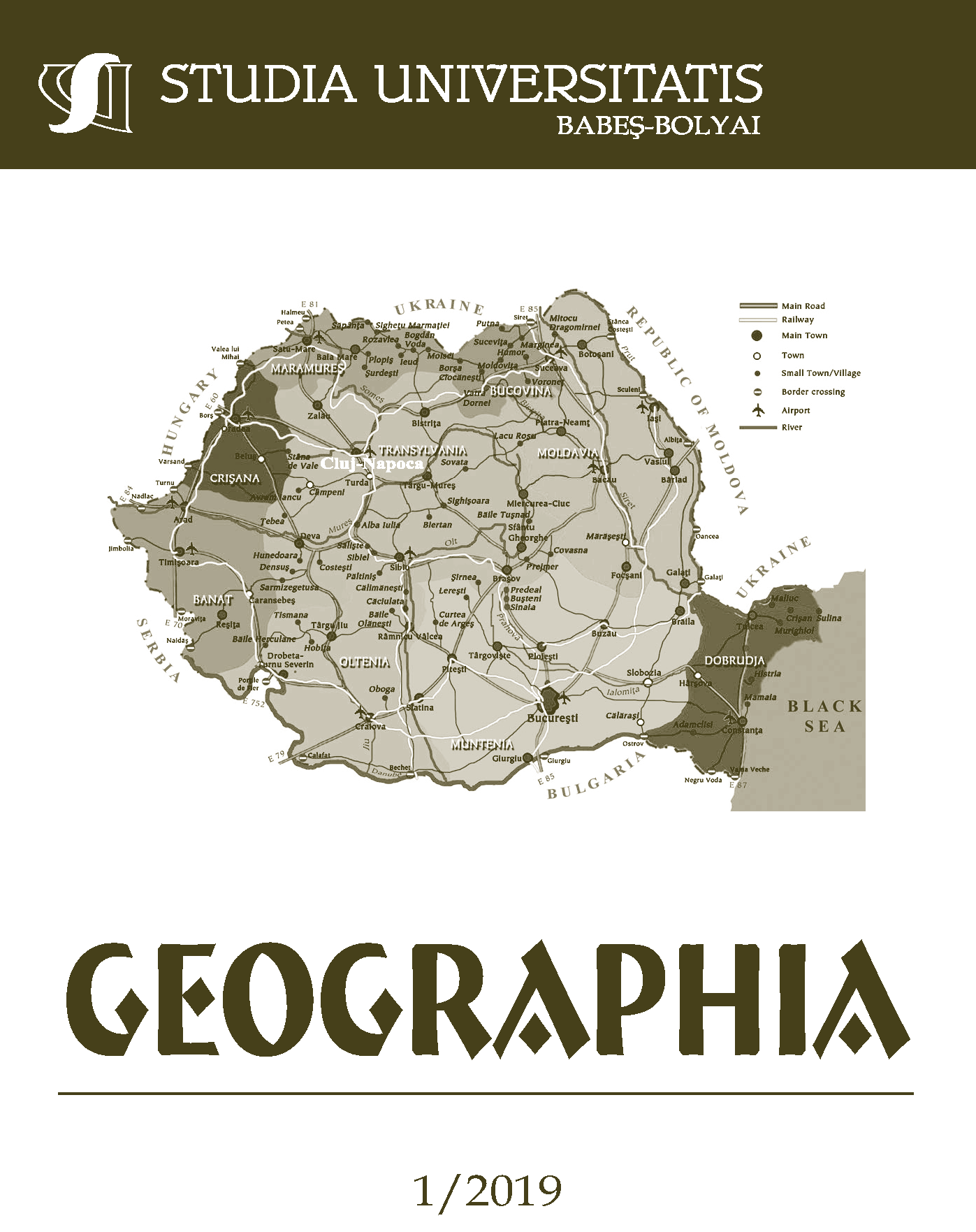A SOCIOLINGUISTIC APPROACH TO PROFESSIONAL IDENTITY CONSTRUCTION IN TOURISM
DOI:
https://doi.org/10.24193/subbgeogr.2019.1.07Keywords:
group identity, tourist identity, professional identity, group identity construction, representation, misrepresentation.Abstract
Identity is an issue that affects all society and all professions, including tourism professions. The process of professional identity construction and/or reconstruction is not reserved only to the academia and to the specialised training institutions, but has become a complex process laid bare for public debate by the media and engaging Web 2.0 and many other societal institutions and processes. If the process has been widely discussed from the point of view of the professionals’ training for different careers (management, communication, marketing, hospitality) or from that of tourist identities (Harrison, 2003; Thurlow & Jaworsky, 2010) and tourism relationships (Thurlow & Jaworsky, 2010), professional group identity in tourism has received less research attention from sociolinguists. Thus, it is the purpose of the present study to address some sociolinguistic considerations that have acquired relevance in the identity formation of groups of employees in tourism based on discourse and interactional sociolinguistic aspects. While surveying the early contributions of Goffman (1950s), Sacks (1960s), Schegloff (1987) and the further advancements in the field (Van Dijk, 1993, 1997; Drew and Heritage, 1993, Miller, 1994; Stubbe, 1998; Cicourel, 2003; 2003; Koester, 2004; Richards, 2006), the study is focused on the case of group identity formation in travel agencies. Finally, it seeks to reveal the temporary nature of identities, the lack of concern of travel agencies for the constriction, reconstruction, survival of group identity.References
Atkinson, P. & Silverman, D. (1997), Kunderas Immortality: The Interview Society and the Invention of the Self, Qualitative Inquiry 3, pp 304–25.
Arminen, I. (2002), Design-oriented Sociology, Acta Sociologica, Vol.2, No.4, December 1, 2002, pp 315-332.
Bolinger, D. (1975), Aspects of Language, 2nd ed., Harcort.
Cicourel, A. (2003), On Contextualizing Applied Linguistic Research in the Workplace, Applied Linguistics, Vol. 24, No 3, Sep 2003, pp. 360-73.
Craib, I. (1998), Experiencing Identity, Sage.
Drew, P. (2003a), Comparative analysis of talk-in-interaction in different institutional settings: A sketch, in Glenn, P., LeBaron, C.D., Mandelbaum, Jenny, eds., Studies in Language and Social Interaction: In honor of Robert Hopper, Mahwah, NJ, Lawrence Erlbaum, pp. 293-308.
Drew, P. (2003b), Precision and exaggeration in interaction, American Sociological Review, vol. 68, pp. 917-938.
Drew, P. & Heritage, J. (1993), Talk at Work: Interaction in Institutional Settings, Cambridge University Press.
Drew, P. & Sorjonen, Marja-Leena (1997), Institutional dialogue, in van Dijk T.A. (ed.), Discourse Studies: A Multidisciplinary Introduction, Sage, London, pp. 92-118.
Garfinkel, H. (1967), Studies in Ethnomethodology, Prentice Hall.
Goffman, E. (1981), Forms of Talk, University of Pennsylvania Press.
Hannam, K, & Knox, D. (2015), Understanding Tourism: A critical Introduction, Sage.
Hester, S. & Eglin, P. (1997), Culture in Action: Studies in Membership Categorization Analysis, Studies in Ethnomethodology and Conversation Analysis, International Institute for Ethnomethodology and Conversation Analysis, University Press of America, Washington DC.
https://books.google.ro/books?hl=en&lr=&id=tT7FxxMnXH0C&oi=fnd&pg=PR4&dq=membership+categorization+analysis&ots=TsC80B9sPD&sig=WHP2Edvyoqihr7gyzGA3k7EdWWU&redir_esc=y#v=onepage&q=membership%20categorization%20analysis&f=false, last accessed on 8 Nov. 2018.
Irimiea, Silvia Blanca (2018), The Relationship between the Language of Tourism, Tourism and Sociology, European Journal of Social Science Education and Research, May-August 2018, Vol. 5, Issue 2, ISSN 2411-9563, pp. 139-151.
Irimiea, Silvia Blanca (2019), Discourse and Society, Presa Universitară Clujeană.
Jaworski, A. & Coupland, N., eds. (2014), The Discourse Reader, Routledge, London.
Koester, A. (2004), The Language of Work, Routledge.
MacLure, Maggie (1993), Arguing for Your Self: identity as an organising principle in teachers' jobs and lives, British Educational Research Journal, Vol. 19, no 4, Sept 1993, pp. 311-322.
Miller, Margaret A. (1994), Pressures to measure faculty work, New Directions for Institutional Research, Volume 1994, Issue 83, pp 5-14.
Richards, K. (2006), Language and Professional Identity: Aspects of Collaborative Interaction, Palgrave Macmillan.
Sacks, H. (1963), Sociological Description, Berkeley Journal of Sociology, 8, 1963, pp 1–16.
Sacks, H. (1967), The Search for Help. No One to Turn to, in E.S. Schneidman (ed) Essays in Self Destruction, Science House, New York, pp. 203–223.
Sacks, H. (1974), An analysis of the course of a joke's telling in conversation, in Sherzer, J. & Bauman, R. (eds.), Explorations in the Ethnography of Speaking, Cambridge University Press, London, pp. 337-53.
Sacks, H. (1992), Lectures on Conversation, Volumes I and II, Edited by G. Jefferson with Introduction by E.A. Schegloff, Blackwell, Oxford.
Sacks, H., Schegloff, E.A., Jefferson, G. (1974), A simplest systematics for the organization of turn-taking for conversation, Language, vol. 50, no. 4, pp. 696–735.
Schegloff, E.A. (1987), Some Sources of Misunderstanding in Talk-in-Interaction, Linguistics, vol. 25, no. 1, pp. 201–218.
Thurlow, C. & Jaworsky, A. (2010), Tourism Discourse, Palgrave MacMillan.
Zimmerman, D.H. (1998), 0Identity, context and interaction, in Antaki, C. & Widdicombe, Sue (eds.) Identities in Talk, Sage, London.
Downloads
Published
How to Cite
Issue
Section
License
Copyright (c) 2019 Studia Universitatis Babeș-Bolyai Geographia

This work is licensed under a Creative Commons Attribution-NonCommercial-NoDerivatives 4.0 International License.





 ©Studia Universitatis Babeş-Bolyai Geographia. Published by Babeș-Bolyai University.
©Studia Universitatis Babeş-Bolyai Geographia. Published by Babeș-Bolyai University.